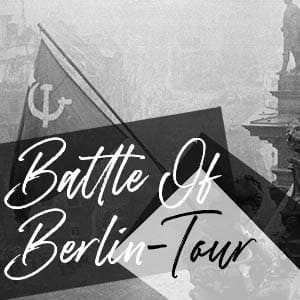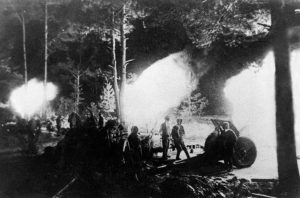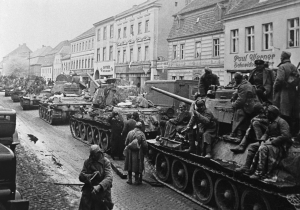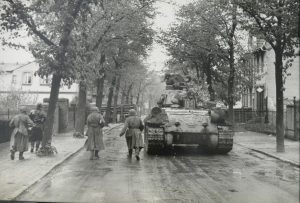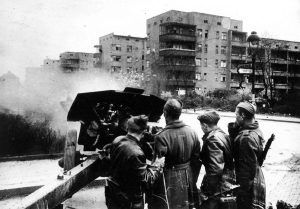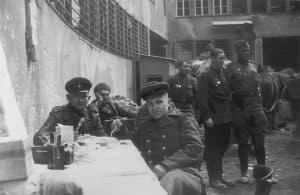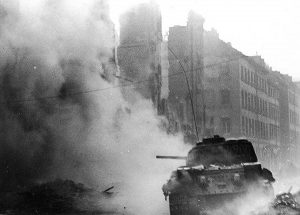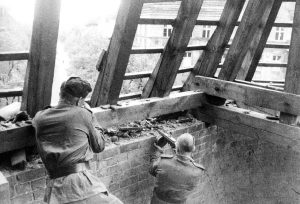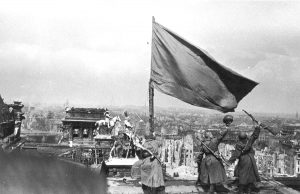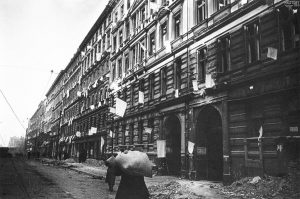“The battle between Frankfurt and the Freienwalder
Senke has reached its culmination…””
Wehrmacht General Gotthard Heinrici
Commander of German Army Group Vistula
–
Nazi leader Adolf Hitler’s mistrust of the officer corps of the Germany Army would only increase with his years in power – and after a failed assassination against him in July 1944, he would come to increasingly demand sycophantic and fanatical obedience from his military leaders beyond any sense of professional competence.
Placing SS leader, Heinrich Himmler, in charge of the replacement army in Germany following this assassination attempt would leave the man whose ideological troops had overseen the implementation of Nazi racial policy and the extermination of undesirables now responsible for the training of all new military formations and the control of all forces inside Germany. Yet, despite his dedication to the National Socialist cause, Himmler’s only military experience had been to serve in the Bavarian Army as a member of a reserve battalion in 1918.
As the First World War ended, the future Reichsführer-SS was still in training, and would see no active service – instead pursuing further education as an agricultural scientist.
Hitler himself would serve as Commander In Chief of the German Army (Oberbefehlshaber des Heeres) from 1941 – after dismissing Field Marshal Walther von Brauchitsch – personally directing the defense of Berlin and the eastern approaches to the city that the Soviet forces on April 18th continued to threaten.

While the German troops of the 9th Army fought on against the combat elements of the 1st Belorussian Front slowly grinding their way beyond the Seelow Heights, further south on the frontline the men assigned to German Army Group Centre were struggling to contain the advance of Ivan Konev’s 1st Ukrainian Front.
The troops facing Konev’s men to the south east of Berlin in April 1945 were serving under the command of Generalfeldmarschall Ferdinand Schörner. A dedicated Nazi who had participated in the 1923 Beer Hall Putsch, Schörner was considered by Hitler to be one of his most competent officers. Perhaps in that he was well known as a strict disciplinarian with an ideological obsession with brutality, who would swiftly deal with deserters in flying courts martial and summary executions.
Men he certainly could have used for his defence of the southern approach to the Nazi capital.
Despite being an extremely capable commander, Schörner had also incorrectly predicted that the main thrust of the Soviet advance in April 1945 would be towards Prague and not Berlin.
An opinion that Hitler himself was only too happy to hear. As he had concluded the same.
Like many previous interventions that Hitler had made to military campaigns, his involvement in the defense of Berlin in 1945 would only serve to make a disastrous situation catastrophic. As troops of the 1st Ukrainian Front burst through Schörner’s left flank and turned towards Berlin – and not Prague.
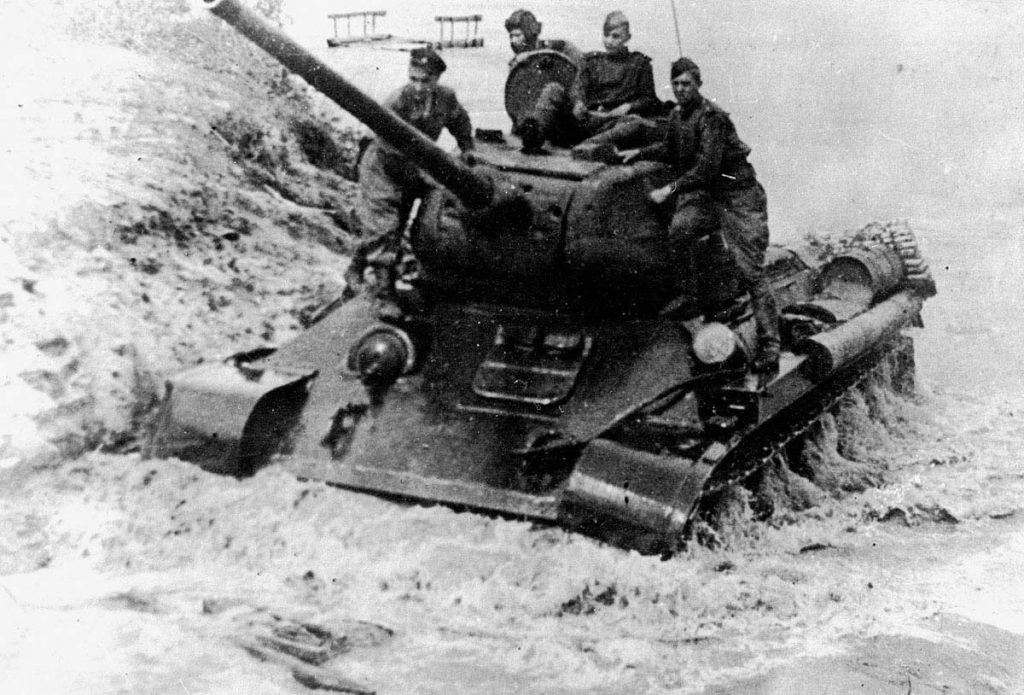
After its initial success on April 16th and 17th, Konev’s 1st Ukrainian Front would push towards the river Spree and Berlin having quickly established and secured bridgeheads across the river Neisse – punching through Schörner’s defensive line and pouring men and tanks into the gaps. Finding a lack of defense in depth, Konev’s tanks managed to cross the Spree near Cottbus around noon on April 18th – before making their way north towards Lübben – and the boundary that had been established by Stalin where Konev’s forces and those of Georgy Zhukov’s 1st Belorussian Front were set to meet.
Zhukov, however, would be nowhere close by that time. A reality that threatened to change the entire Soviet plan of attack.
Could Konev make it to Berlin before Zhukov?
Meeting the two Soviet Marshals in Moscow at the start of April 1945, in preparation for the Battle of Berlin, Stalin has established a series of control lines behind the German defences – to indicate where the division between the advancing Red Army troops should be. Rather than extending across German territory, the Soviet leader had only drawn the line as far as the town of Lübben – a small town in the region of Lower Lusatia.
Indicating that what remained on the western side of that line was open territory – and that should Konev’s troops manage to surge forwards faster that those of the 1st Belorussian Front assigned to assault the main concentration of German forces at the Seelow Heights, it was conceivable that Konev might be allowed to take the prize of the Nazi capital himself.
Despite brutal fighting, Konev’s tanks had moved at unbelievable speed – much to his orders the previous day of demanding boldness and swiftness on the part of his mechanised troops. Leaving behind them huge quantities of twisted metal from burned out tanks and equipment and bodies scattered across the terrain.
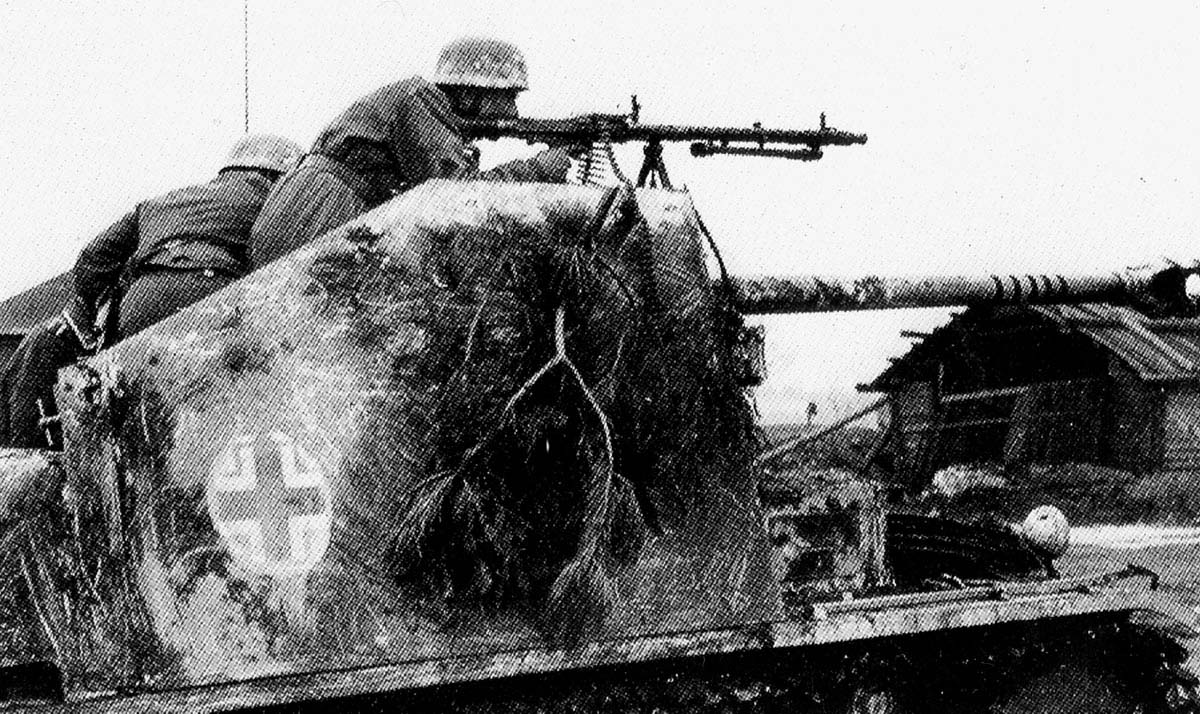
On April 18th, Zhukov’s troops did manage to advance north of Army Group Vistula’s main force – the 9th Army – but was hit with serious counterattacks – with some of the heaviest coming from the 11th SS Panzergrenadier Division Nordland and the 23rd SS Panzergrenadier Division Nederland. These SS units were made up of volunteer foreign fighters from Norway and Denmark, and the Netherlands and had seen action on the Eastern Front – mainly fighting partisans in Yugoslavia.
Fuelled by a visceral hatred of Bolshevism, the SS foreign legion fighters would go down as some of the most formidable involved in the Battle of Berlin. They had joined to fight on the Eastern Front and in the process had lost their countries.
They would soon lose their cause.
Accompanying these two SS Panzergrenadier Divisions was the SS-Panzer Abteilung 103 (503rd) that would halt Zhukov’s forces between Prötzel and Bollersdorf on the morning of April 19th. A dozen King Tiger tanks and eight flak tanks would repel a large Soviet armoured assault for the loss of just one King Tiger. Abteilung 103 would claim 64 Soviet tanks destroyed in the engagement, leaving the Second Guards Tank Army severely mauled.

By nightfall on April 18th, Zhukov’s force had pushed 3-8km in the centre and reached the third and final line of German defences – but were already 48 hours behind the deadline that Zhukov had set himself to Stalin to break through these final positions.
Having finally taken the Seelow Heights around 7pm on April 17th, Red Army troops would now have to deal with the so-called Wotan line of defences established by Army Group Vistula, west of the town of Müncheberg.
The new task of navigating through the open countryside, confronted by a different series natural obstacles, would now present other challenges beyond those faced when assaulting the Seelow Heights and its fortified positions.
The 1st Belorussian Front would continue to make limited progress through April 18th due to the general lack of coordination, as units manoeuvred through the dirt roads that ran through the heavily forested hills around the Seelow Heights and were caught in traffic jams – with high armour losses as Zhukov’s tankers were picked off and massacred by German anti-tank squads.
With few attempts at reconnaissance made, Zhukov’s Tank Guards Armies would attempt to move forwards along the Reichsbahn 1 towards the town of Müncheberg – forming a single line in an attempt to cover as much distance as possible – only to run straight into unscouted German positions and be ambushed by Panzers, anti-tank guns, and soldiers. The flanking units winding down secondary roads would encounter similarly serious opposition. Fratricide was also a common concern for the Soviet troops as there would be little cooperation between the formations of units often advancing side-by-side through unfamiliar pine forests and rolling hills – with little rest over the 48 hours since the Berlin operation began.
The Soviet artillery practice of ‘boxing’ whereby a blanket of fire would be laid down behind the frontline to stop enemy reinforcements while Red Army infantry attacked the cut-off defenders often served only to hinder Zhukov’s orders demanding a speedy advance. As Soviet troops would take a position and continue to move into their own artillery barrage before being driven back to their original positions by the enemy counterattack that would emerge once the bombardment had ceased.
Beyond their tenuous defenses the German troops were left dealing with their own growing list of problems – vehicles having to be abandoned after running out of fuel; soldiers losing contact with their commanders and wandering the battlefield; and the growing suspicion of ‘Seydlitz Troops’ (soldiers who had switched sides and were sent to the German lines in uniform with orders to blend in with the defenders and spread confusion) meant that no-one unfamiliar could be trusted.
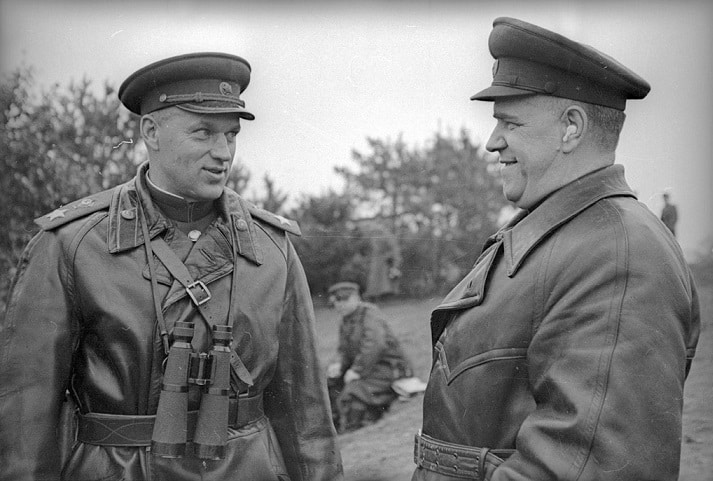
Further north, Konstantin Rokossovsky’s 2nd Belorussian Front was still regrouping from mopping up in East Prussia and Pomerania – but would be called up by Stalin to start moving virtually off the march. An expression of the Soviet leader’s frustration at the lack of success within the first 48hrs on the part of Zhukov’s 1st Belorussian.
Between Schwedt to the south and Stettin, Rokossovsky’s troops would move against General Hasso von Manteuffel’s 3rd Panzer Army. A Panzer Army which had in fact no true Panzer formations but four infantry and five panzergrenadier Volkssturm divisions, to defend a 95km frontier leading to the Baltic coast.
Rokossovsky’s task was particularly difficult, as it involved crossing both the east and western branches of the River Oder, which were separated by a two mile flood plain bordered by dykes. This meant that the 2nd Belorussian would struggle to bring artillery, and tanks, into the fight; instead relying on the Red Army Airforce to make up for the deficiency.
The offensive would begin in the early hours of the next day with artillery preparation and air strikes – with the main push coming a day later on April 20th – Adolf Hitler’s birthday.
Like the previous evening, Royal Air Force Mosquito bombers would descend on the city in the dark hours of April 19th. Fifty seven bombers dropped their loads on the Reich capital before returning to their bases. All would return home safely.
The Nazi leader was personally familiar with the various types of Allied aircraft that would appear in the skies over Berlin – he certainly could recognise a B-17 when he saw one. He would frequently mention the Royal Air Force’s De Havilland Mosquito in meetings with military staff, aptly named for its ability to remain a nuisance to the Reich capital. A small reconnaissance aircraft made of wood, it was difficult to detect on radar and would often move low and fast to overfly the Reich with almost total impunity.
By April 1945, this hardly mattered, as the much vaunted Luftwaffe was a hollow shell of itself with many of its personnel drafted to the front to join the desperate fight to defend the capital.
**
Our Related Tours
Want to learn more about the Battle of Berlin? Check out our Battle of Berlin tours to explore what remains of this important urban battlefield.
To learn more about the history of Nazi Germany and life in Hitler’s Third Reich, have a look at our Capital Of Tyranny tours.
Bibliography
Beevor, Antony (2003) Berlin: The Downfall 1945 | ISBN 978-0-14-028696-0
Hamilton, Aaron Stephan (2020) Bloody Streets: The Soviet Assault On Berlin | ISBN-13 : 978-1912866137
Kershaw, Ian (2001) Hitler, 1936–1945: Nemesis | ISBN 0-393-04994-9
Le Tissier, Tony (2010) Race for the Reichstag: the 1945 Battle for Berlin | ISBN: 978-1848842304
Le Tissier, Tony(2019) SS Charlemagne: The 33rd Waffen-Grenadier Division of the SS | ISBN: 978-1526756640
Mayo, Jonathan (2016) Hitler’s Last Day: Minute by Minute | ISBN: 978-1780722337
McCormack, David (2017) The Berlin 1945 Battlefield Guide Part I the Battle of the Oder-Neisse | ISBN: 978-1781556078
McCormack, David (2019) The Berlin 1945 Battlefield Guide Part II The Battle of Berlin | ISBN: 978-1781557396
Moorhouse, Roger (2010) Berlin at War | ISBN: 978-0465028559
Ryan, Cornelius (1966) The Last Battle | ISBN 978-0-671-40640-0
Sandner, Harald (2019) Hitler – Das Itinerar, Band IV (Taschenbuch): Aufenthaltsorte und Reisen von 1889 bis 1945 – Band IV: 1940 bis 1945 | ISBN: 978-3957231581
Shirer, William L. The Rise and Fall of the Third Reich | ISBN 978-1451651683.

